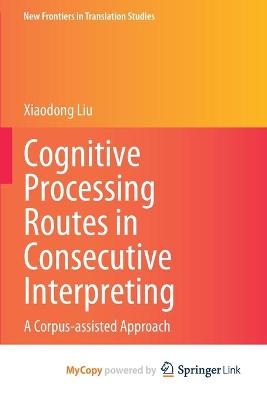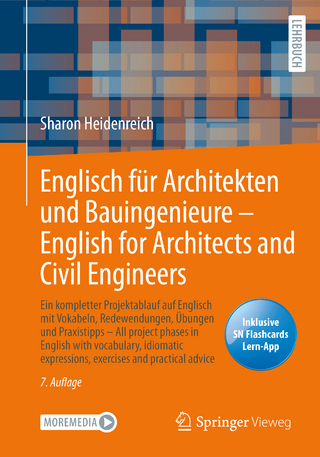
Cognitive Processing Routes in Consecutive Interpreting
Springer Verlag, Singapore
978-981-16-4528-0 (ISBN)
Dr. Xiaodong Liu is Head of the Business English Department at the School of Foreign Studies, and Director of the Center for Studies of Translation and Cognition, Hunan University of Humanities, Science and Technology, China. He received his Ph.D. in Translation Studies from the University of Macau, Macao (2018). His main research interests include translation process research, corpus-assisted translation studies, and translation teaching research. He has (co-)initiated numerous translation process research projects at various levels, e.g., Corpus-assisted Translation Process Research (HUHST Startup Research Fund) and Corpus-assisted Research on Neurocognitive Processing Routes (19C0971) supported by the Education Department of Hunan Province. He has published numerous articles on translation studies in national and international journals, such as Babel, Digital Scholarship in the Humanities, Across Languages and Cultures, T & I Review, Foreign Language Education, Chinese Science & Technology Translators Journal, and so on. He is Member of the Macao Federation of Translators, and created and is Vice President of the Loudi Association of Translators and Interpreters.
AcknowledgementsAbstractDeclarationList of Tables and FiguresList of AbbreviationsChapter 1. Introduction1.1 Purpose and Motivations of the Study1.2 Research Background1.2.1 General Background1.2.2 Specific Background1.3 Research Questions1.4 Methodological Issues1.5 Structure of the Book1.6 Statement of Originality1.7 SummaryChapter 2. Interpreting Process2.1 Psycholinguistic View2.1.1 Theoretical Models2.1.2 Empirical Studies2.2 Neuro-physiological View2.3 Interpreting Studies View2.4 SummaryChapter 3. An Integrated Neurocognitive Theory of Translating and Interpreting3.1 An Integrated Perspective to Language Processing3.1.1 Subsystems of Language Processing3.1.2 The Interplay of Memory and Computation3.1.3 Neurocognitive Bilingual Processing and Control3.1.4 Translating and Interpreting as Bilingual Processing3.2 Neurocognitive Processing Routes for Translation and Interpreting3.2.1 Recoding via Meaning-based Processing3.2.2 Recoding via Form-based Processing3.2.3 Recoding via Memory-pairing3.3 SummaryChapter 4. The Corpus-assisted Approach to Translation Process Research4.1 Corpus-assisted Research on Translation Processes4.2 Corpus-assisted Approach Employed in the Previous Studies4.2.1 Challenges of the Corpus-assisted Approach4.2.2 Key Concepts of the Corpus-assisted Approach4.3 Corpus-assisted Approach Employed in the Current Study4.4 SummaryChapter 5 Source and Target Material5.1 Source Speeches and Target Deliveries5.2 Source Profiling5.3 Target Profiling5.4 SummaryChapter 6. A Parallel Bilingual CI Corpus6.1 Transcription of Video-recordings6.1.1 Transcription6.1.2 Removing Noise from the Corpus6.2 Corpus Design6.2.1 Time Span6.2.2 Corpus Size6.3 Processing Tools6.3.1 EditPlus6.3.2 CorpusWordParser6.3.3 ABBYY Aligner6.3.4 Microsoft Excel6.3.5 ParaConc6.4 Segmentation and Alignment6.5 Annotation6.5.1 Annotation Scheme for the STs and TTs6.5.2 Using Word Macros for Tagging6.6 Concordance Search and Query6.6.1 Concordance Search Steps6.6.2 ParaConc Search Example6.7 SummaryChapter 7 Example Analyses7.1 Chinese-English Interpreting7.1.1 Interpreting Proper Names7.1.2 Interpreting Metaphors7.1.3 Interpreting Classic Quotations7.1.4 Interpreting Idiomatic Expressions7.2 English-Chinese Interpreting7.2.1 Interpreting Proper Names7.2.2 Interpreting Metaphors7.2.3 Interpreting Idiomatic Expressions7.2.4 Interpreting Classic Quotations7.3 SummaryChapter 8. Interpreting Patterns8.1 A Roadmap of the CSIs Interpreting Patterns8.2 Patterns of PNs: Lexical vs. Phrasal vs. Clausal8.2.1 Interpreting Proper Names: C-E Direction8.2.2 Interpreting Proper Names: E-C Direction8.3 Patterns of the CSIs in C-E Conferences vs. C-E Talks8.3.1 Interpreting Proper Names8.3.2 Interpreting Metaphors8.3.3 Interpreting Idiomatic Expressions8.3.4 Interpreting Classic Quotations8.4 Patterns of the CSIs in C-E vs E-C Language Directions8.4.1 Interpreting Proper Names8.4.2 Interpreting Metaphors8.4.3 Interpreting Idiomatic Expressions8.4.4 Interpreting Classic Quotations8.5 SummaryChapter 9. A Theoretical Account of the Interpreting Patterns9.1 Grammatical Unit9.2 Source Categories9.3 Settings9.4 Language Direction9.5 General Discussions9.6 SummaryChapter 10 Research Questions Revisited10.1 Question One: How Are the Neurocognitive Processing Routes reflected in English vs Chinese consecutive interpreting?10.2 Question Two: Which route dominates English vs Chinese consecutive interpreting?10.3 Question Three: What affects the adoption of the dominant route?10.4 The Controversy10.5 SummaryChapter 11 Conclusions and Future Perspectives11.1 Conclusions from the Research11.2 Limitations of this Study and Suggestions for Future ResearchReferencesAppendix I Information of the Source Materials and Target DeliveriesAppendix II Examples for TaggingAppendix III Individual Interpreting PatternsAppendix IIII Segments Randomly Sampled
| Erscheinungsdatum | 13.12.2021 |
|---|---|
| Zusatzinfo | 37 Illustrations, color; X, 190 p. 37 illus. in color. |
| Verlagsort | Singapore |
| Sprache | englisch |
| Maße | 155 x 235 mm |
| Themenwelt | Schulbuch / Wörterbuch ► Wörterbuch / Fremdsprachen |
| Geisteswissenschaften ► Sprach- / Literaturwissenschaft ► Sprachwissenschaft | |
| Schlagworte | Bilingual Processing • Cognitive Processing Routes • Corpus-assisted • Form-based Processing Route • Meaning-based Processing Route |
| ISBN-10 | 981-16-4528-0 / 9811645280 |
| ISBN-13 | 978-981-16-4528-0 / 9789811645280 |
| Zustand | Neuware |
| Haben Sie eine Frage zum Produkt? |
aus dem Bereich


